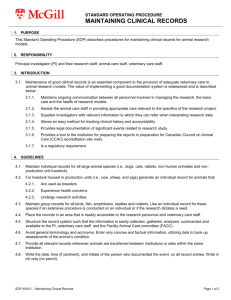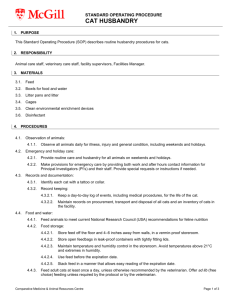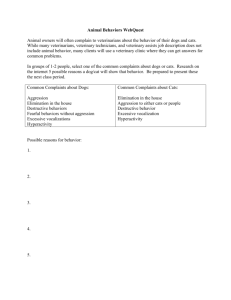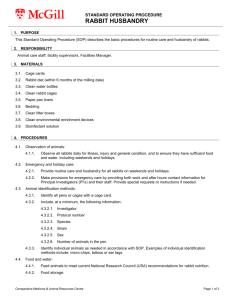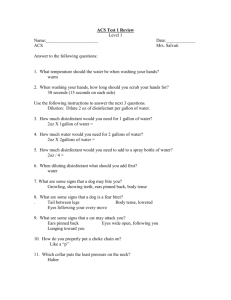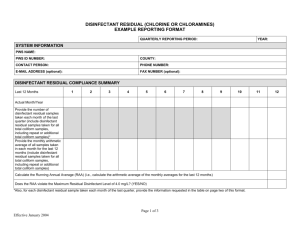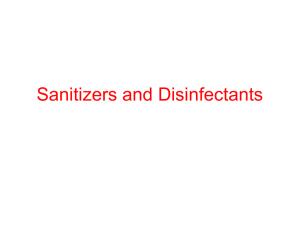4.1. Daily
advertisement
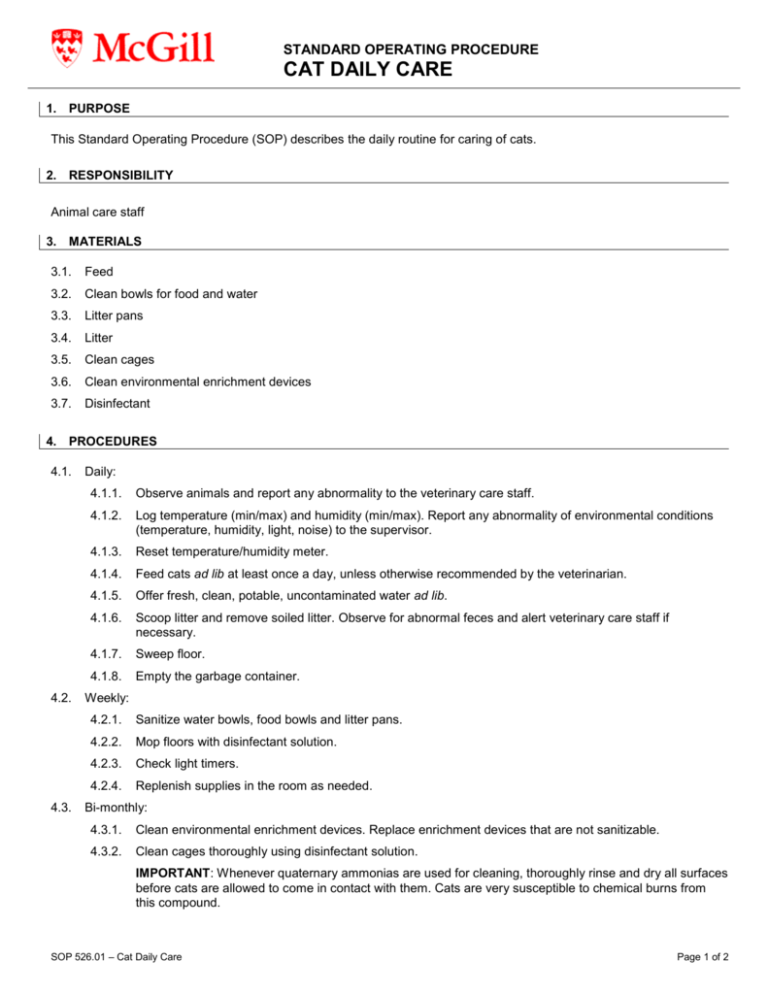
STANDARD OPERATING PROCEDURE CAT DAILY CARE 1. PURPOSE This Standard Operating Procedure (SOP) describes the daily routine for caring of cats. 2. RESPONSIBILITY Animal care staff 3. MATERIALS 3.1. Feed 3.2. Clean bowls for food and water 3.3. Litter pans 3.4. Litter 3.5. Clean cages 3.6. Clean environmental enrichment devices 3.7. Disinfectant 4. PROCEDURES 4.1. 4.2. 4.3. Daily: 4.1.1. Observe animals and report any abnormality to the veterinary care staff. 4.1.2. Log temperature (min/max) and humidity (min/max). Report any abnormality of environmental conditions (temperature, humidity, light, noise) to the supervisor. 4.1.3. Reset temperature/humidity meter. 4.1.4. Feed cats ad lib at least once a day, unless otherwise recommended by the veterinarian. 4.1.5. Offer fresh, clean, potable, uncontaminated water ad lib. 4.1.6. Scoop litter and remove soiled litter. Observe for abnormal feces and alert veterinary care staff if necessary. 4.1.7. Sweep floor. 4.1.8. Empty the garbage container. Weekly: 4.2.1. Sanitize water bowls, food bowls and litter pans. 4.2.2. Mop floors with disinfectant solution. 4.2.3. Check light timers. 4.2.4. Replenish supplies in the room as needed. Bi-monthly: 4.3.1. Clean environmental enrichment devices. Replace enrichment devices that are not sanitizable. 4.3.2. Clean cages thoroughly using disinfectant solution. IMPORTANT: Whenever quaternary ammonias are used for cleaning, thoroughly rinse and dry all surfaces before cats are allowed to come in contact with them. Cats are very susceptible to chemical burns from this compound. SOP 526.01 – Cat Daily Care Page 1 of 2 4.4. Monthly: 4.4.1. 4.5. Wipe down all surfaces such as sinks, doors, door jams and doorknobs, windows, cart tops, shelves, etc. with the disinfectant solution once per month. Bi-annual: 4.5.1. Clean walls with disinfectant solution. 5. SPECIAL PROCEDURES 5.1. Sick or injured animals: 5.1.1. 5.2. Complete an Illness/Injury Report and submit it to the veterinary care staff. Dead animals: 5.2.1. Dead animals are placed in a plastic bag with a Dead Animal Found card attached. The information from the cage card must be transferred to this card. 5.2.2. Place the bag in the cold room or in the refrigerator/freezer. 5.2.3. Alert the veterinary care staff. The PI is notified by the veterinary care staff. Comparative Medicine & Animal Resources Centre Page 2 of 2 SOP 526.01 – Cat Daily Care Written by: Jim Gourdon Revised on (yy-mm-dd): 09-02-18 Revision # 01 Effective date (yy-mm-dd): 09-02-18
